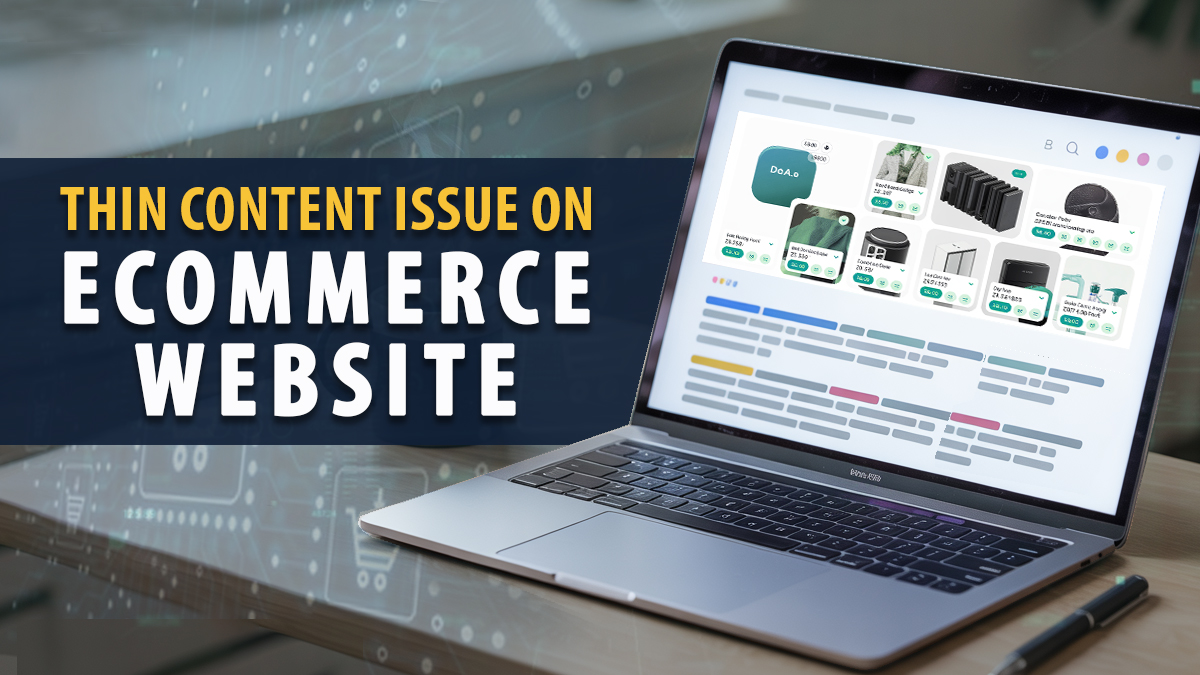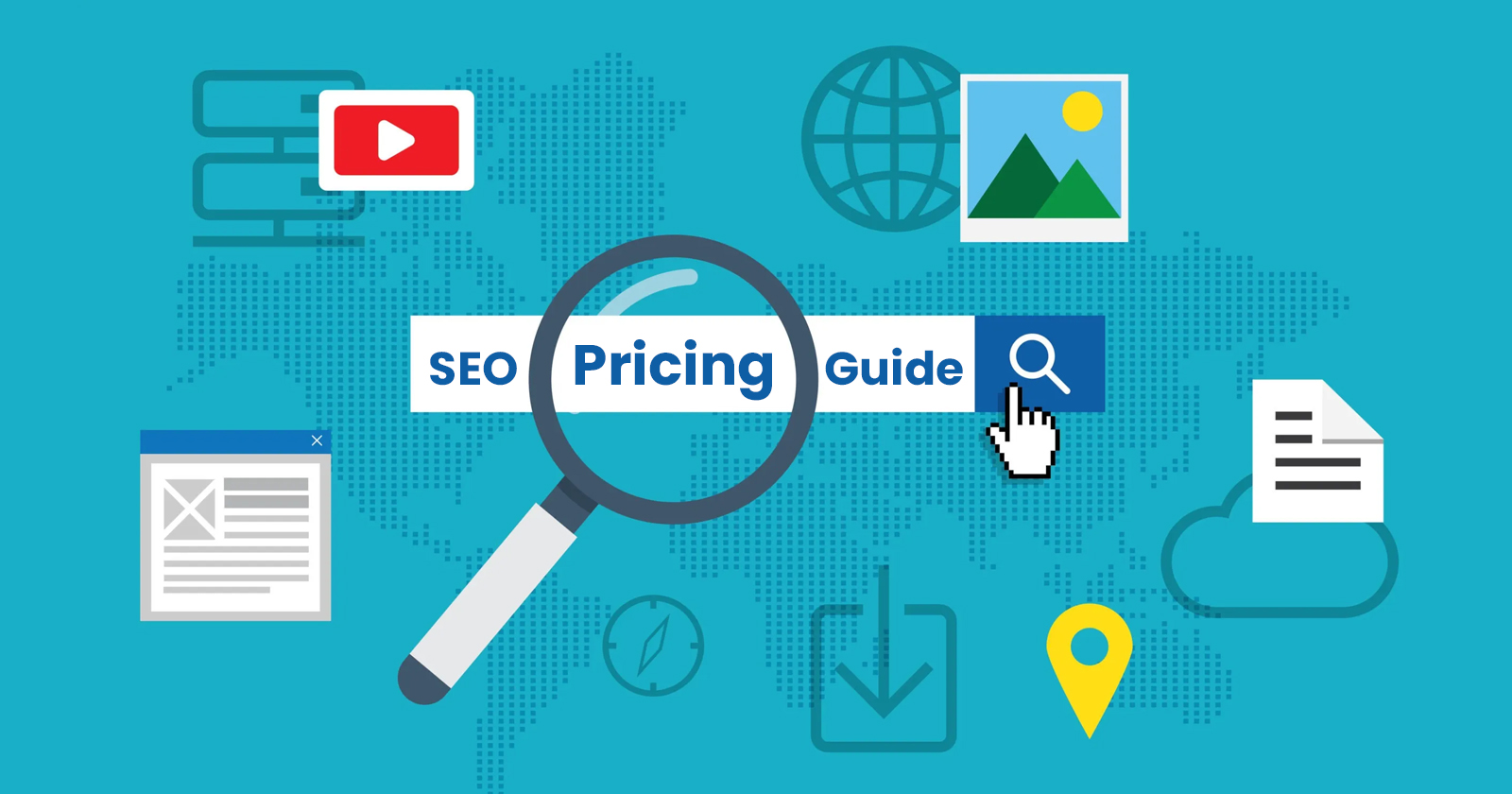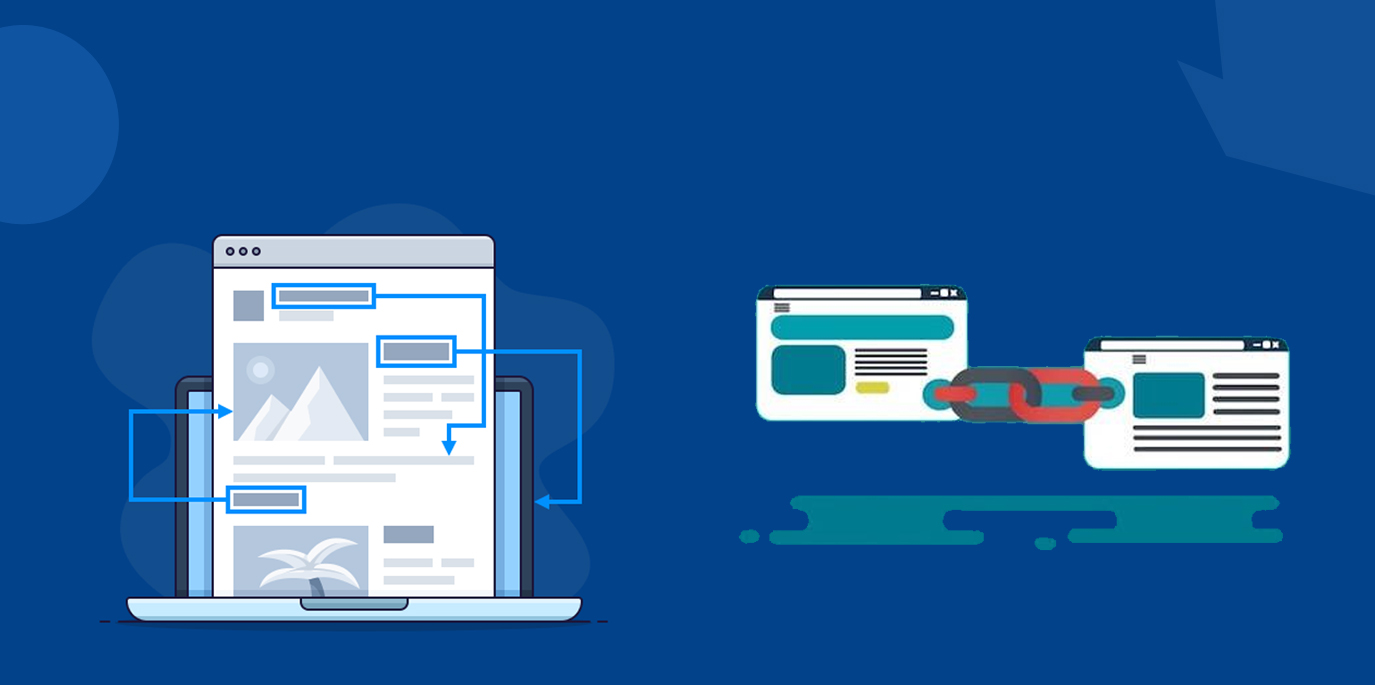Q: I have an eCommerce site and want to know how can we differentiate between thin & rich content, so as to avoid thin content penalty?
A: Many online sellers deal with thin content issues on ecommerce website. Thin content is a big problem for online stores, especially when product pages have only brief descriptions or copies of information from the manufacturers. Search engines favor pages that provide helpful, detailed, and unique information.
If you have a high domain authority, Google will look at the thin content in another way. The best example is eBay, which managed to escape from the eyes of Google for many years, despite having thin content. It has now been hit by Panda because I think they overdid it. There were hundreds of millions of pages with thin content (almost 98% of the site).
Even though thin content cannot be avoided completely in ecommerce stores, having thin content can really hurt your ranking on search engines, decrease your website visitors, and reduce how much users interact with your site.
Luckily, there are smart ways to improve your content without making big changes to your website. Hiring eCommerce SEO services helps resolve thin content issues on your online store by optimizing product pages with rich, keyword-focused content—improving search visibility, user engagement, and conversion rates.
By adding special descriptions, using customer reviews, and doing other things, you can turn low-quality pages into valuable ones that help your website rank better and make shopping easier. We will see how to do this in this post.
What is Thin Content?
It is a type of website content that doesn’t have much information or value. It might be short, not helpful, or not unique. This kind of content doesn’t give readers what they need and can hurt a website’s ranking.
Thin content is when a webpage has either very little information or the information is not very good. Usually, this happens when you haven’t added enough content, your content is very brief, or it may even be copied from a manufacturer’s website.
Why is Thin Content a Problem for Online Stores?
E-commerce websites are usually very big sites. You could have a lot of pages, maybe hundreds or even thousands, and 95% of them will be about products. You have your main page, your content pages, and your category and subcategory pages.
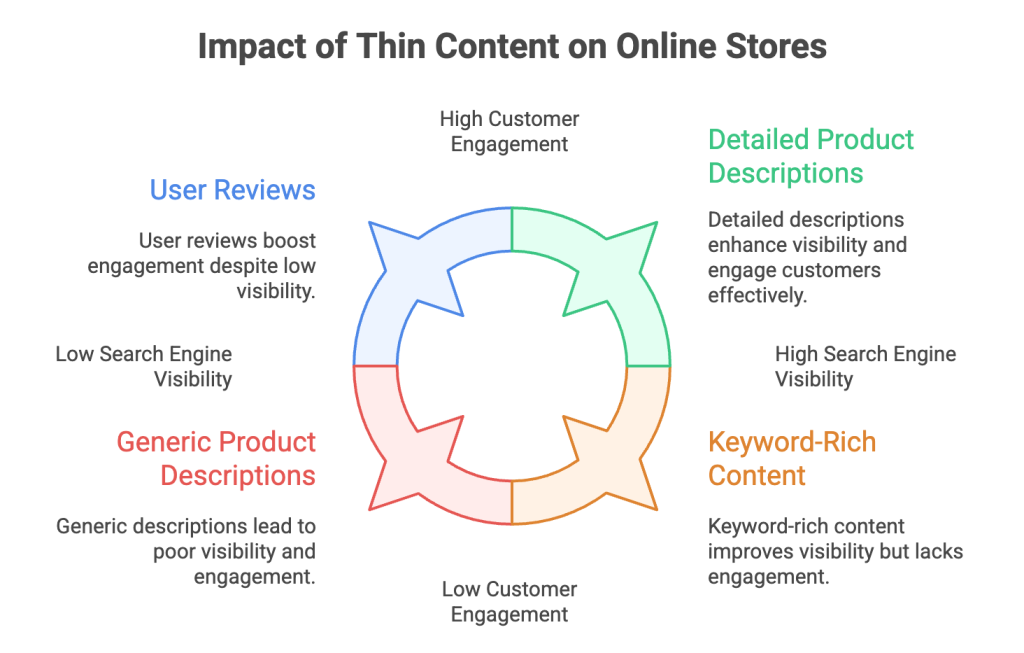
Next, you will have all your product pages ready. When Google checks your website, most of what it looks at will be the product pages. It’s a lot of work to create new content for each of those product pages.
So, thin content becomes a big issue for online stores because it makes it harder for customers to have a good experience and lowers their chances of being found on search engines. Thin content means web pages that don’t have much useful information.
They may only have a few sentences, copied text, or general product descriptions taken from manufacturers. Crawlers focus on showing good, original content that is helpful to users.
When an online store has many product pages that have little or the same information, it shows search engines that the site isn’t trustworthy or helpful. This can lead to lower rankings on results pages and less free traffic.
Also, weak content doesn’t attract customers well. Shoppers need clear product details, facts, side-by-side comparisons, and reviews to help them choose what to buy. Pages with little information make buyers less confident and cause them to leave the site quickly.
In a competitive online shopping market, where customers can easily choose other stores, not having clear and convincing information can lead to losing customers and fewer sales. If there’s not enough useful and keyword-filled text on a webpage, search engines have a hard time figuring out how relevant the page is.
This can lead to important products being missed or ranked low. In big stores with many products, having articles with little information can cause problems. It makes bots spend time looking at unimportant pages instead of focusing on more important ones.
Also Read: How to Fix Duplicate Content Issues on Your Website?
Why is Unique Content Important?
First, we want to be clear that based on our experience with many online shopping sites, the ones that do better, especially for small businesses, have unique content. They’ve spent time and worked hard to write it.
Having original content is very important for any website, especially for businesses, blogs, and online stores. It helps improve rankings, keeps users interested, and builds trust in the brand.
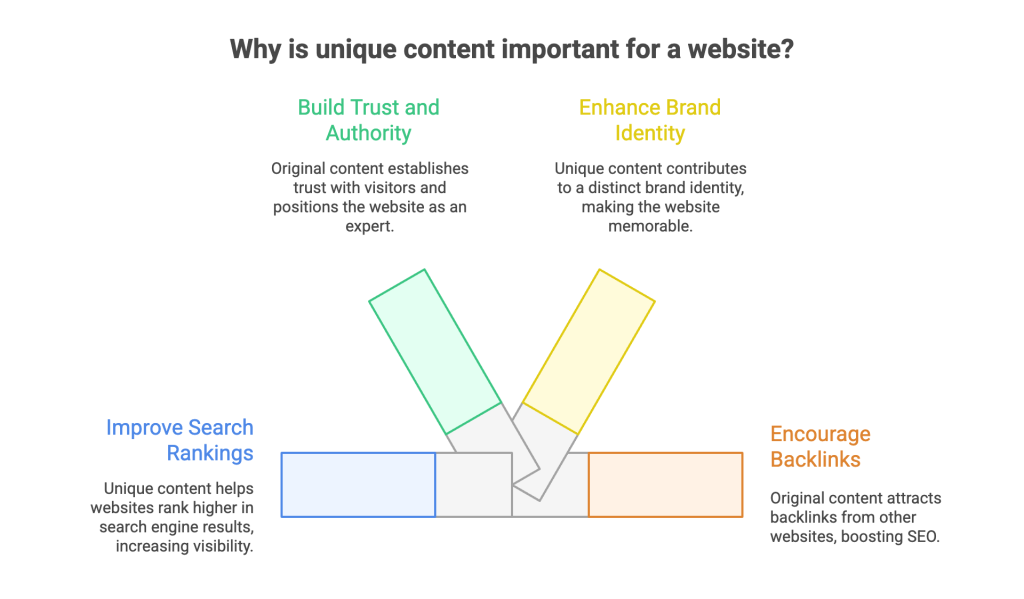
Search engines try to provide the best and unique answers to what people are looking for. When a website has original content that you can’t find anywhere else on the internet, it shows search engines that the site is valuable.
This can help the website show up higher in results pages. On the other hand, having copied or unoriginal content can cause problems or make the website less visible, which means fewer people will find it naturally.
Besides helping with crawlers, original content makes visitors trust you more and see you as an expert. People are more likely to visit, come back to, and share a website that offers new ideas, helpful information, or solutions that fit what they need.
For online businesses, this means more sales and more loyal customers. For example, clear and unique product descriptions, blog posts, how-to guides, or success stories show that the brand knows its products well and cares about what users experience.
When a website shares information in a unique way, like its style, layout, or topics, it makes a lasting impression that helps build the brand’s identity. Also, having original content encourages other websites to link to yours, which helps your SEO and brings more visitors.
Creating unique content is not only to avoid penalties; it’s also about creating a strong base of trust, and connection with your audience. It helps draw in the right people, satisfy their needs, and make the brand look important in its area, key parts for lasting online success.
Can Thin content Get a Good Rank?
There are 200 factors that can affect your ranking. Even if your content is not very detailed, you can still rank well if all your other factors are strong. If you have good links, good technical SEO, and a good reputation, you can get a high rank.
If you’re a small business and you don’t have those benefits, then you need to find ways to improve your situation wherever possible. Having original content on your product pages will really help you succeed.
It’s a long process, but you can start by focusing on your main products first. You should consider what it would be like if Google visited your website. If 90% of your product pages have very little content, it will make your whole site look bad.
Tips for Good Content Practice
We suggest you spread out the products you have on your website. Don’t try to create a huge amount of content all at once, because that will lead to poor quality content. You could start by creating a hundred pages, then add another hundred later.
This way, you have a smaller website that you can handle easily and add new content to over time. If you make all the pages at once, you might end up with thousands of pages that don’t have good content, and that will hurt your SEO.
Also Read: Winning Ecommerce SEO Strategies for Your Online Store
How to Differentiate Between Thin and Rich Content?
If your website has a strong reputation, Google will see low-quality content differently. A great example is eBay, which avoided being noticed by Google for a long time, even though it had thin content.
It has been affected by Panda because we believe they went too far. There were hundreds of millions of pages with very little useful information, making up about 98% of the website. A good SEO plan is the best solution if you’re concerned about having thin content.
It will help you get more valuable links, boost your website’s authority, and lower the chances of having low-quality content. You can take a lesson from Amazon. They make their product pages better by adding customer reviews, which also provide useful information from other users.
5 Tips to Fix Thin Content Problems
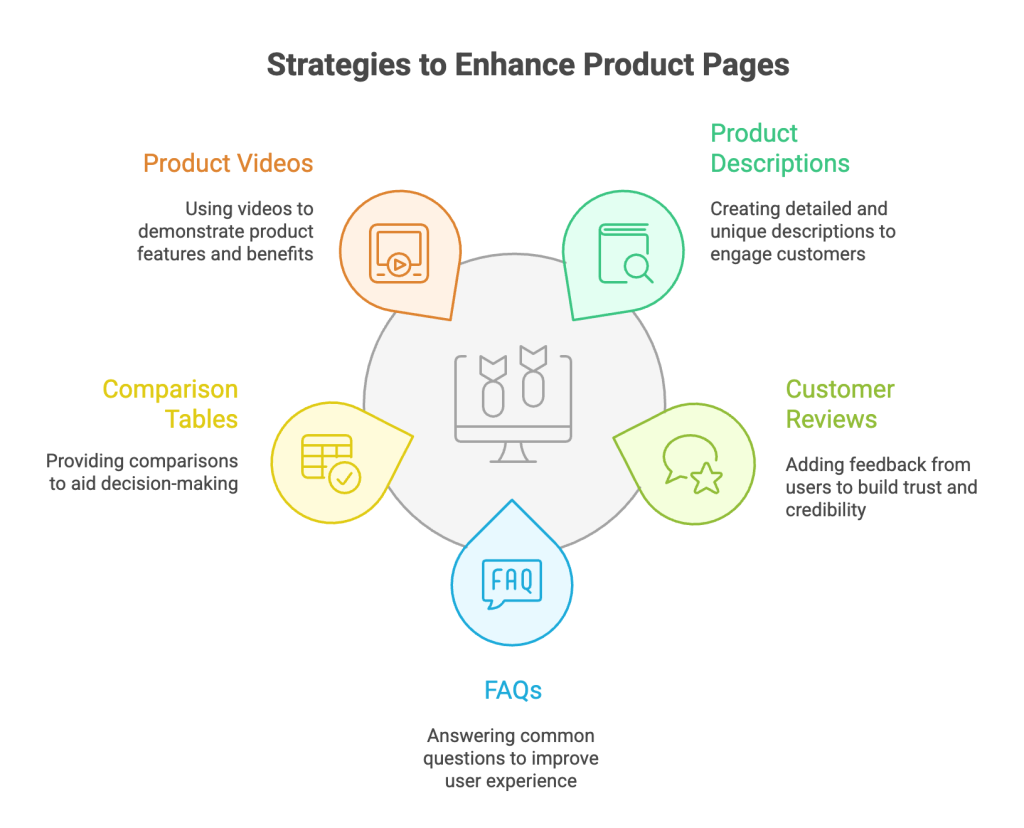
Create Interesting Product Descriptions
A great way to fix thin content is to create unique and detailed descriptions for products instead of just copying the manufacturer’s text. Talk about what the product does well, how it can be used, and what makes it special.
Use natural language and include important keywords without overdoing it. A good description helps customers by answering their questions and creating trust. Focus on the materials, size, compatibility, or styling advice based on the product.
Try to write at least 150 to 200 words for each product whenever you can. This helps search engines recognize each product page as important, improves its chances of ranking higher, and creates a better experience for users, making them more likely to buy.
Add Customer Ratings and Reviews
Reviews from customers are a great way to improve product pages with feedback from users. Reviews give new, important keywords that help search engines and make it easy for potential buyers to trust the product.
Ratings show how good a product is, and comments provide extra information that may not be in your product descriptions. Ask customers to share their thoughts after they buy something by sending them automatic emails.
If you let people add photos or videos to their reviews, it makes your content more valuable and special. This not only makes the pages thicker, but it also helps increase sales by showing that other people support it.
Use FAQs on Product Pages
Adding a small FAQ section to product pages can answer common customer questions and make the page more useful. Consider the common questions your customer service team gets, like those about compatibility, usage, or delivery.
Please reply to these questions straight on the product page using clear and simple words. Every answer is a chance to include important words and give better information to both users and crawlers.
Google might show these FAQs as rich snippets in search results, making them easier to see. This small change can really boost your page’s SEO without making the design or user experience too complicated.
Add Comparison Tables
Comparison tables help users make better choices and provide useful information on category or product pages. If you sell different types of similar products, like laptops, clothes, or appliances, display a comparison of their features, specifications, or prices.
Use headings like “Best for Budget,” “Top Performance,” or “Most Popular” to help users find what they need. These tables naturally include specific keywords and help search engines see how products are related to each other.
They’re also good for users, especially on phones. Comparison tables make it easier for people to make choices, which keeps them on the website longer and stops them from leaving quickly.
Include Product Tutorials or Videos
Videos greatly improve interest on product pages and add extra content that attracts both users and search engines. Think about adding demos that show how the product works, opening the package, setting it up, or what customers say about it.
Videos help explain the product more clearly, build trust, and lower the number of returns. For better search engine results, include a brief summary or script below the video with important keywords.
Search engines can’t “see” videos, so having text helps them understand and organize your content better. Websites like YouTube can help people find your site, especially if your videos are set up the right way.
To Conclude
Fixing thin content on online shopping sites is important for getting better search results, improving how users feel about the site, and boosting overall business success. This may not be easy to achieve because most of the content on these sites are thin.
Even though having little space and pages focused on products can make it hard to share information, there are easy solutions like special descriptions, content from users, FAQs, videos, and comparison tools that can help make your site better.
These improvements give useful information to your customers and help search engines see your pages as trustworthy and important. The aim is to share interesting information while also showing products clearly.
By fixing thin content ahead of time, online stores can do better in search results, keep visitors on their site longer, and get more useful traffic and sales. It’s an investment that brings long-lasting results for search engine ranking and makes money over time.
FAQs
Can customer reviews help fix problems with thin content?
Yes, customer reviews are a great way to improve simple product pages. They offer new and interesting content that is important for both people and search engines. Reviews show that other people trust a product, which makes new customers feel more secure. They usually include everyday language with specific phrases that help with search results. Encouraging people to post photos or videos in their reviews can make the content better.
Can I use the descriptions from the manufacturer on my product pages?
It’s common to use manufacturer descriptions, but it’s not a good idea to rely on them completely. Many other stores use these descriptions, which can lead to the same content appearing in multiple places. Because of this, search engines might overlook it or give a penalty. To prevent problems with having thin or copied content, write product descriptions in your own words.
How can I create content for thousands of products?
Making content for large online stores can be hard but doable if you have a good plan. Use templates to keep the format the same while changing important information for each product. Hire writers or use AI tools to create initial drafts that you can improve for quality and originality. Begin with your top-selling or strongest products. Gradually create content in groups. Additionally, create a system to automatically add user-generated content such as reviews, FAQs, and testimonials to enhance the main descriptions.
Does using structured data help with thin content?
Yes, structured data (or schema markup) helps crawlers understand and show your product pages better. Using Product schema helps Google display important details like ratings, price, and availability. It doesn’t take the place of good content, but it helps make pages with little information more useful and attractive in search results. It also helps Google understand how your site is organized, which can improve how it’s listed and ranked. Tools like Google’s Rich Results Test can help you use and check schema.
What are some usual errors to steer clear of when making thin content better?
Common mistakes are using too many keywords, making descriptions too general, copying content for similar products, and not considering what the user wants. Also, don’t make extra pages for small product changes. Another mistake is paying too much attention to SEO and ignoring user experience. Make sure your website works well on mobile phones and remember to update your content often. To be successful over time, it’s important to keep your content new, useful, and related to what people need.
Related Services
Explore the award winning services of PageTraffic that puts you in the search engine spotlight.
- SEO Services – Search engines have become rigidly stringent and the competition is doing all it can to move up. However, we snatch the top positions for you.
- Full Time SEO Consultant – The modern mantras of growth are streamlining and strategizing. Hire an expert full time SEO consultant to manage and take care of both.
- SEO Reseller – Expand your client base and service offerings with our private label SEO reseller partnership.
